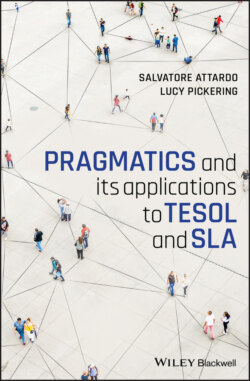Читать книгу Pragmatics and its Applications to TESOL and SLA - Salvatore Attardo - Страница 9
1 Meaning
ОглавлениеLet’s start from a very simple, everyday situation, a man walks in a donut store and asks for a donut, for example, by saying: “May I have a donut, please?” The donut shop employee turns around, picks up a donut, and gives it to the man. There are many ways of looking at this situation, but we will focus on just one aspect: How did the man and the donut shop employee know that the uttering the word “donut” would cause the transaction to succeed?1 A simple explanation is that both the man and the employee know that “donut” means a certain kind of pastry made with sweet dough that is deep fried and covered with various glazes, sugar, and/or sprinkles. Furthermore, the man and the employee know that by using the word, they are referring to (i.e., they mean) an object that happens to be in the display case of the shop. However, the word “means” in this explanation is deceptively simple. In fact, a whole discipline, a part of philosophy, deals with the apparently simple idea of “meaning.” Within linguistics, which is our domain, many ideas from philosophical semantics have been adopted but a few come from other fields, as we will see.
Semantics is thus the part of linguistics that deals with meaning. We will start out by defining meaning; to do so, we must introduce the idea of the semiotic sign and of code or, to put it differently, explain how it is possible to mean something using something else. We then introduce two major approaches to semantics: the extensional (referential) approach and the intensional approach. Once we have examined these two radically different ways of approaching semantics, we will examine the contentious issue of the boundary between semantics and pragmatics, which is entwined with the idea of context and of modularity. These are big ideas that exceed pragmatics and even linguistics. However, it is important to understand where pragmatics itself as a science is located, within the context of its two older sisters: philosophy and psychology.
